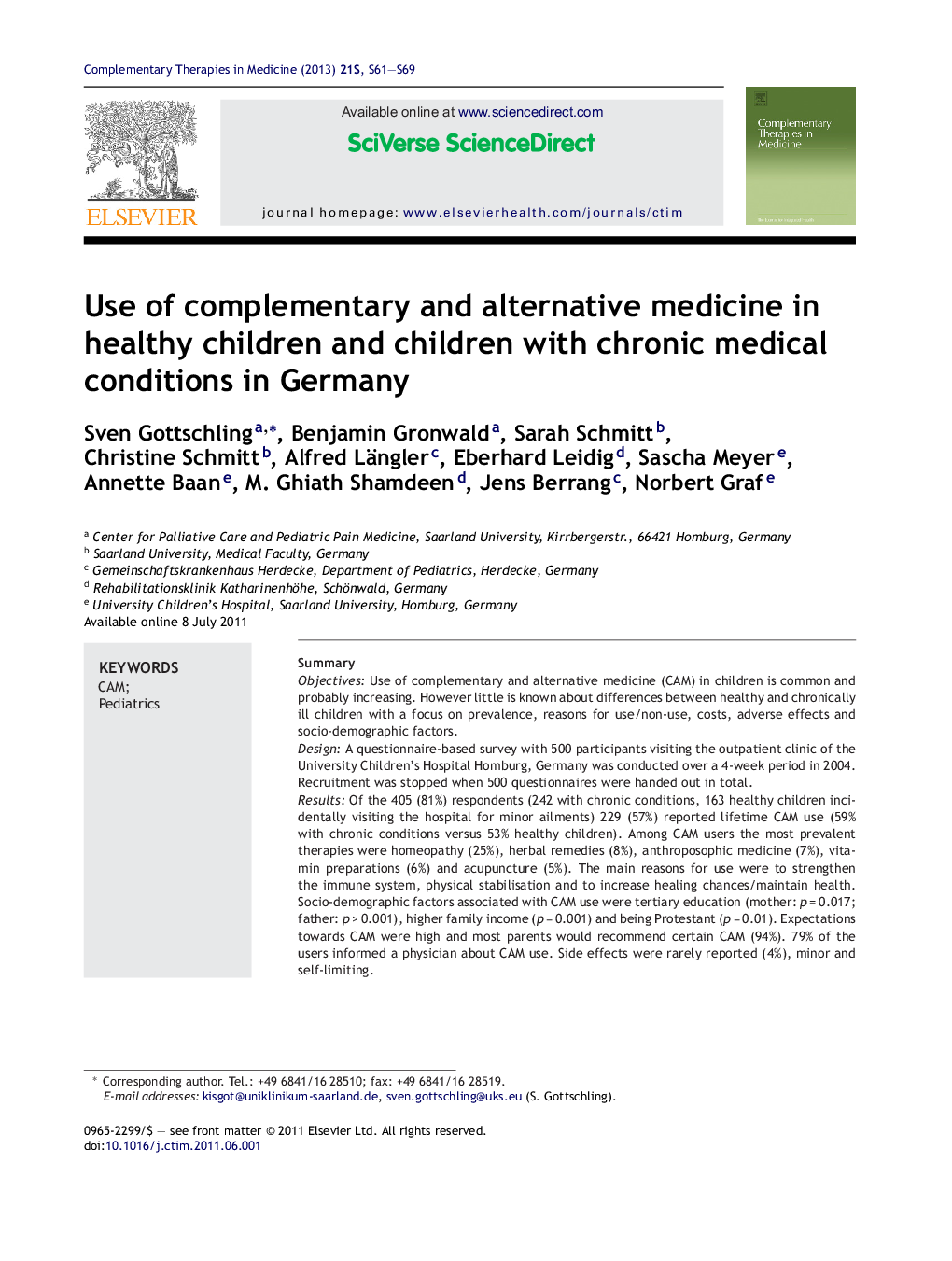| Article ID | Journal | Published Year | Pages | File Type |
|---|---|---|---|---|
| 2629085 | Complementary Therapies in Medicine | 2013 | 9 Pages |
SummaryObjectivesUse of complementary and alternative medicine (CAM) in children is common and probably increasing. However little is known about differences between healthy and chronically ill children with a focus on prevalence, reasons for use/non-use, costs, adverse effects and socio-demographic factors.DesignA questionnaire-based survey with 500 participants visiting the outpatient clinic of the University Children's Hospital Homburg, Germany was conducted over a 4-week period in 2004. Recruitment was stopped when 500 questionnaires were handed out in total.ResultsOf the 405 (81%) respondents (242 with chronic conditions, 163 healthy children incidentally visiting the hospital for minor ailments) 229 (57%) reported lifetime CAM use (59% with chronic conditions versus 53% healthy children). Among CAM users the most prevalent therapies were homeopathy (25%), herbal remedies (8%), anthroposophic medicine (7%), vitamin preparations (6%) and acupuncture (5%). The main reasons for use were to strengthen the immune system, physical stabilisation and to increase healing chances/maintain health. Socio-demographic factors associated with CAM use were tertiary education (mother: p = 0.017; father: p > 0.001), higher family income (p = 0.001) and being Protestant (p = 0.01). Expectations towards CAM were high and most parents would recommend certain CAM (94%). 79% of the users informed a physician about CAM use. Side effects were rarely reported (4%), minor and self-limiting.ConclusionsClinical care and the physician-patient relation would benefit from an enhanced understanding of CAM and a greater candidness towards the parental needs. The safety and efficacy especially of CAM with high prevalence rates should be determined in rigorous basic and clinical researches.
